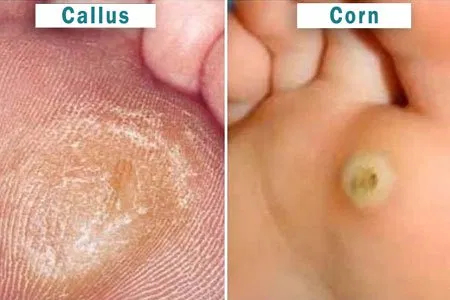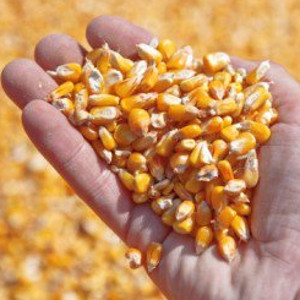I’m sick and tired again, today. And I can’t find any new and interesting on which to base a post. This is the first time in the 10-year history of this blog that I’ve truly and completely come up dry for subject matter. But suffice it to say – I’m using my ‘Get Out Of Work Free’ card again…
 There is a difference. But Corns are often found under callouses…
There is a difference. But Corns are often found under callouses…
What ails me?
A whole list of little things that add up to a world of pain and aggravation. One of these afflicts me more than all of the many others today: I inherited bunions from my Mom. They first manifested themselves about 6 years ago and I finally had to have minor surgery on them by a podiatrist last year. They just hurt so much when I tried to walk, I couldn’t stand it (literally). I’m back at that incredibly painful place again, and my podiatrist is closed for the second-wave COVID-19 lock down. So I am literally hobbled. I do have a few choice words to share about foot troubles like mine.
I have Corns
(Under my callouses, and above my bunion pressure points). I could try to trim the callouses myself. All it takes is a clean, new, sharp blade in an X-acto knife and some patience. But my back is also part of what’s giving me hell these days, and I can’t bend over far enough to reach the bottoms of my feet.
So I’m begging off my official duties in this blogspace, hoping I’ll be able to get back to them as usual tomorrow.
A little ‘food’ content’
To satisfy sister Erin, who says I need to have some every day, especially when I’m goofing off bringing you the results of some new scientific study about what we eat and what it’s doing to us.
What is a Corn?
Wikipedia says: “A corn (or clavus, plural clavi or clavuses) is a distinctively shaped callus of dead skin that usually occurs on thin or (hairless and smooth) skin surfaces, especially on the dorsal surface of toes or fingers. They can sometimes occur on the thicker skin of the palms or bottom of the feet.
“Corns form when the pressure point against the skin traces an elliptical or semi-elliptical path during the rubbing motion, the center of which is at the point of pressure, gradually widening. […] The hard part at the center of the corn resembles a barley seed, that is like a funnel with a broad raised top and a pointed bottom. Because of their shape, corns intensify the pressure at the tip and can cause deep tissue damage and ulceration. Hard corns are especially problematic for people with insensitive skin due to damaged nerves (e.g., in people with diabetes mellitus). The scientific name for a corn is heloma (plural helomata). A hard corn is called a heloma durum, while a soft corn is called a heloma molle.”
Learning that a Corn is like a small, hard seed, I imagined initially that it had been named when an exhausted grain farmer stumbled in from his combine and his wife, after a quick look, proclaimed he had kernels of Corn embedded in the soles of his feet.
That’s probably not what happened…
But taking into account that Brits and Europeans have long called many types of livestock feed grains ‘Corn’, I like to think it was something like that.
So… That’s your ‘food content’ for today, flimsy as the connection was. I need to go and lie down, now, and see if the painkillers I took half an hour ago have kicked in strongly enough to permit me a chance to make up on the sleep I missed last night when my feet kept waking me up.
~ Maggie J.

